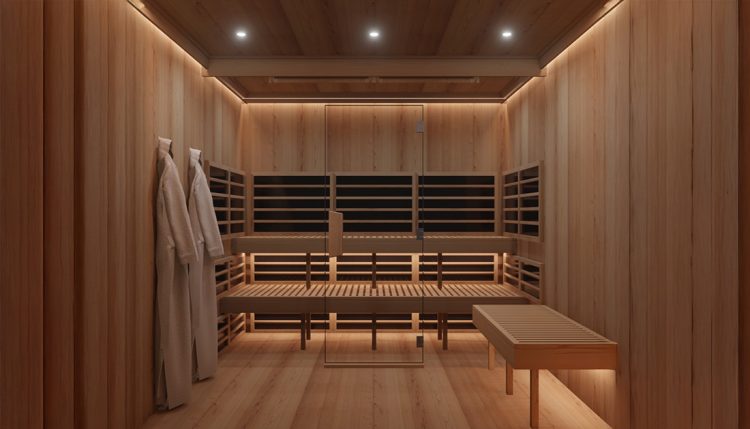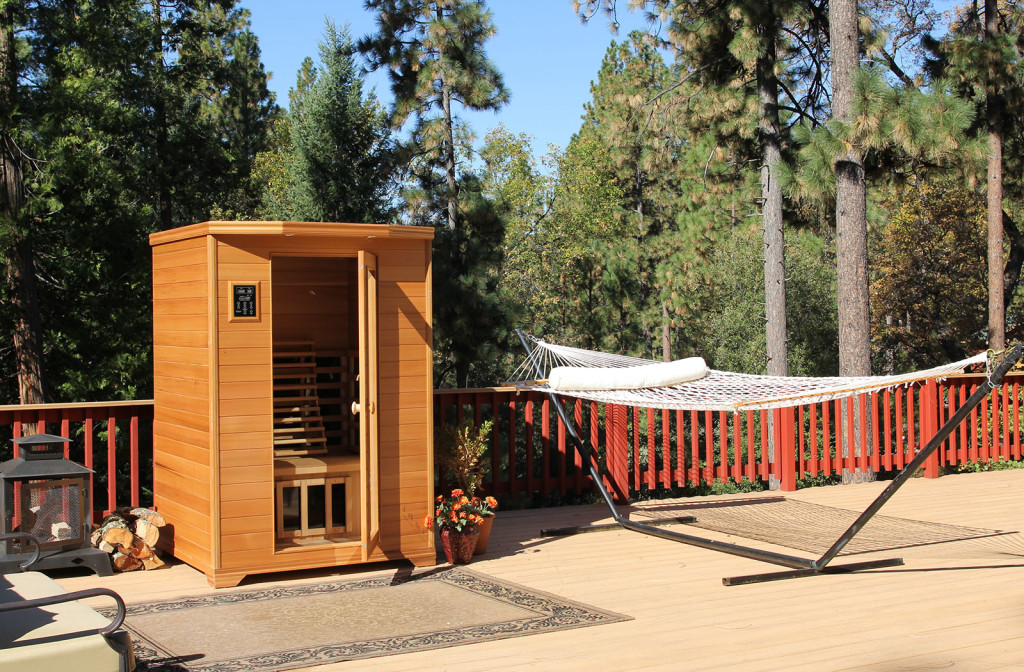Infrared Saunas vs. Traditional Saunas: What’s the Real Difference?

You’ve probably seen a traditional hot rock sauna at your gym, on TV, or at a spa. They’re iconic: wooden rooms with heaters and people sitting in towels, sweating it out in a thick cloud of steam. This style of sauna dates back centuries, when humans would gather in small huts warmed by heated stones — often doused with water to produce steam. Before the luxury of indoor plumbing, saunas served as both social gathering spots and early forms of bathing.
But in the last few decades, a new kind of sauna has emerged: the infrared sauna. While it shares the same core goal—raising your body temperature in a controlled environment—the technology behind it is completely different. This guide breaks down the major differences between infrared and traditional saunas so you can decide which one’s right for you.
How Infrared Saunas Work
Infrared saunas don’t rely on heating the air around you. Instead, they use far infrared light—a form of invisible radiant heat that mimics the warmth of the sun. This energy penetrates about 1.5 inches into the body, gently raising your core temperature from the inside out.
Infrared heat is radiant heat:
Roughly 80% of the infrared energy is absorbed directly by your body, while only 20% warms the air.
This light is produced by passing an electrical current through infrared-emitting materials such as carbon fiber or ceramic clay panels. These panels don’t make the room feel oppressively hot, but they do trigger a deep, therapeutic sweat. Infrared saunas typically operate between 110°F and 140°F, offering a more comfortable experience than the intense heat of a traditional sauna.
How Traditional Saunas Work
Traditional saunas rely on convection and conduction. Rocks are heated using an electric or wood-burning stove, and water is poured over them to create steam. This heats the air, which in turn heats your skin. The typical temperature range for a traditional sauna is 185°F to 190°F.
Traditional saunas heat the air to heat your body:
The combination of steam and high temperature creates an intense sweating environment, but it can be hard to tolerate for long sessions.
Steam saunas must also be preheated—sometimes 30 minutes or more before use—making them less convenient for spontaneous use.
A Breakdown of the Key Differences
Feature | Infrared Sauna | Traditional Sauna |
|---|---|---|
Heat Type | Radiant (thermal radiation) | Steam (convection + conduction) |
Temperature Range | 110–140°F | 185–190°F |
Sweat Depth | Deep tissue, longer duration | Surface level, shorter duration |
Air Humidity | Dry | Humid |
Heating Time | 10–15 min | 30–40 min |
Energy Efficiency | High | Low |
Installation Cost | $1,000–$6,000 | $2,000–$10,000+ |
Operating Cost | ~25% of traditional sauna | High electricity demand |
Electrical Setup | 110V–120V (15–20 amp) | Usually requires dedicated 240V circuit |
Best For | Daily use, inflammation, detox | Occasional use, traditional heat experience |
Why Infrared Saunas May Offer More Benefits
While both types of saunas can improve circulation, aid in recovery, and reduce stress, infrared saunas offer a broader range of health benefits—particularly for people managing chronic conditions like:
Inflammation and joint pain
High blood pressure
Toxin buildup
Sleep issues
Weight gain or metabolic concerns
Longer sessions, lower temperatures:
Infrared saunas make it easier to sweat deeply and consistently — allowing for more sustained detox and recovery.
Because of their gentler heat, infrared saunas are ideal for daily use. You don’t need to preheat the room for half an hour or brace yourself for intense heat. You just step in, relax, and let the infrared light do its work.
Energy, Cost & Installation
Traditional saunas often require professional installation, higher voltage (240V) electrical wiring, and significant energy usage to heat both the rocks and the air. The cost to run one regularly can be substantial.
Infrared saunas, by contrast, are more energy-efficient and generally plug-and-play for smaller models. Some midsize or larger models may need a 20-amp plug, but this can be installed affordably by an electrician.
Lower cost, easier setup:
Most homeowners can install their infrared sauna themselves. 95% of our customers do.
Infrared saunas typically cost between $1,000 and $6,000, depending on size and features, while custom steam saunas can exceed $10,000. And infrared saunas cost about 75% less to operate month-to-month.
Which One Should You Choose?
The answer depends on your goals.
If you’ve grown up using traditional saunas and enjoy the high heat and humidity, a steam sauna may feel nostalgic and deeply cleansing. These units can be great for occasional, ritualistic use.
But if you’re looking for:
Daily sessions
Therapeutic benefits
Faster recovery
Lower cost
Greater energy efficiency
Then an infrared sauna is the smarter choice.
For everyday wellness and long-term health, infrared wins.
It’s more comfortable, more convenient, and more aligned with today’s health goals — especially for those battling chronic inflammation, fatigue, or toxic overload.



